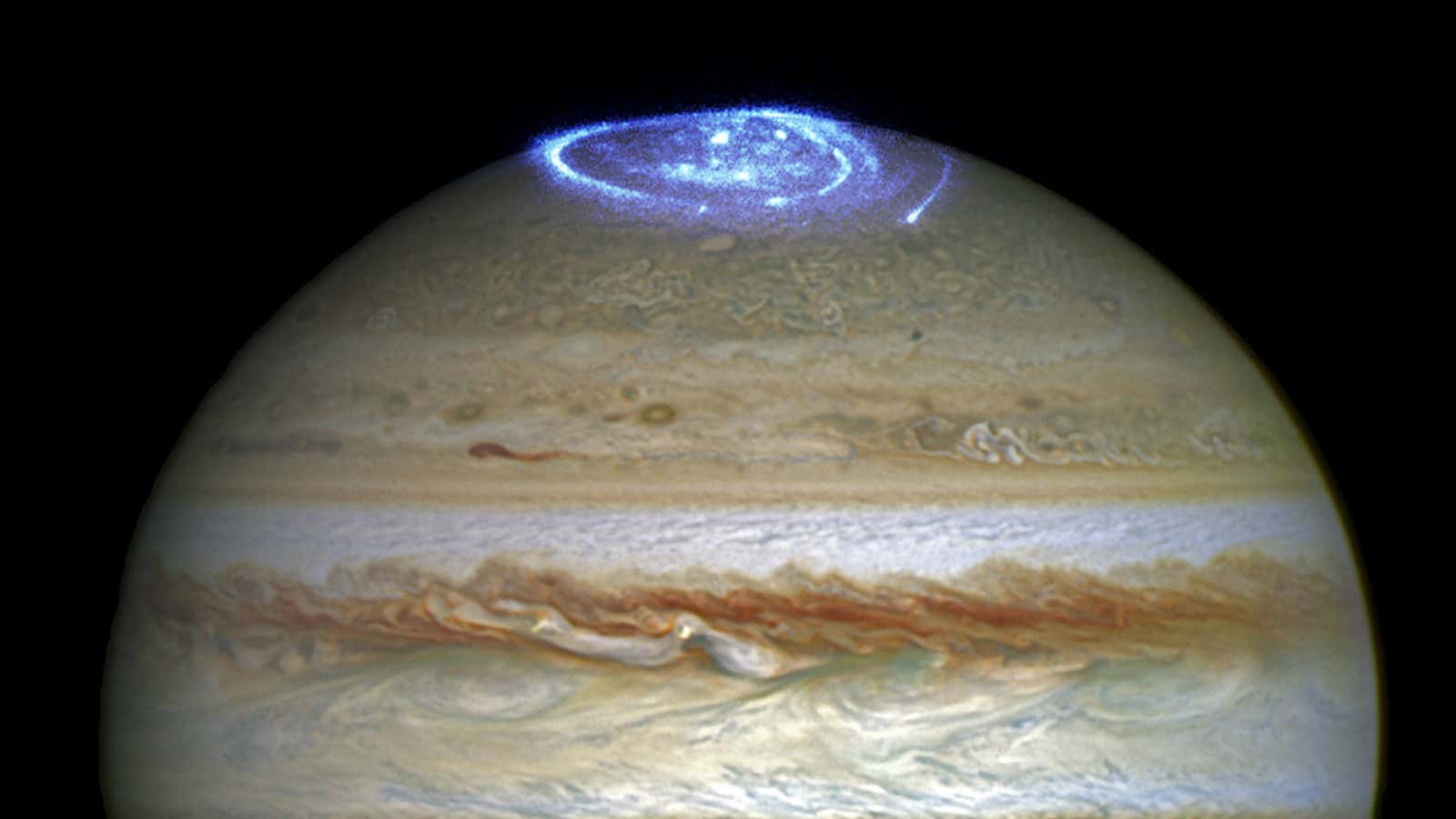Ever seen fireworks on Jupiter? It’s quite something.
Astronomers have released breathtaking photos, taken with the Hubble space telescope, of Jupiter’s gigantic auroras, which are light shows caused by high-energy particles entering the planet’s atmosphere near the poles and colliding with gas atoms.
They are hundreds of times more powerful than Earth’s, due largely to Jupiter’s much, much stronger magnetic field. Unlike on our planet, these polar light displays are not created by solar winds alone but also with charged particles from Io, Jupiter’s volcanic moon.
The largest planet in the solar system was already known for its colourful storms, especially its Great Red Spot—the solar system’s largest perma-storm that is the width of three Earths. NASA scientists have now turned their attention to activity at its poles to figure out how the auroras respond to changes in the solar wind (a stream of charged particles emitted by the Sun).
They have yet to calculate just how enormous these auroras are.
“These auroras are very dramatic and among the most active I have ever seen,” said Jonathan Nichols from the University of Leicester, who heads up the study. “It almost seems as if Jupiter is throwing a firework party for the imminent arrival of Juno.”
That would be NASA’s Juno spacecraft, which is expected to reach Jupiter on July 4, penetrating the strongest magnetic field in our solar system—20,000 times stronger than Earth’s—and its lethal radiation belts to begin a 20-month study.
It aims to circle the planet in 37 skewed orbits, skimming to within 3,100 miles (5,000 km) above the cloud tops, measuring the microwaves coming from inside its atmosphere and mapping its magnetic field.
